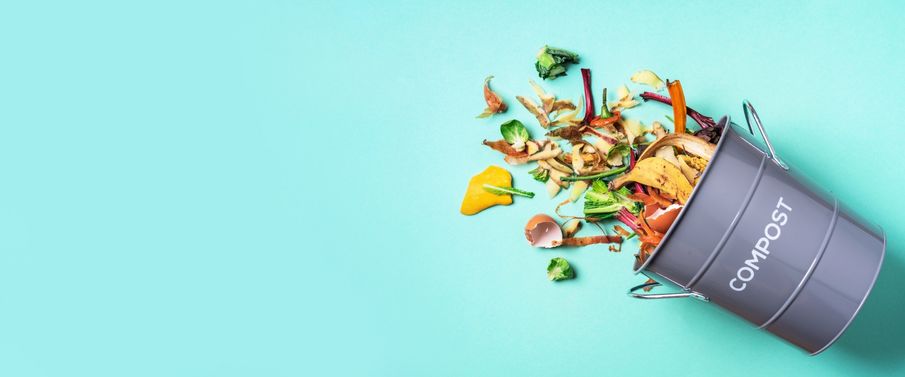Cultivating your own compost not only benefits your garden with a homegrown, nutrient-rich mix, but ensures you’re recycling as much of your household waste as possible
You want a good balance of materials to ensure your compost breaks down effectively – roughly 25–50% soft green waste, and the rest from brown items. Here, we’ll dig into the specifics to help you craft the perfect compost pile.
Do include:
• Black and white newspaper
or plain paper.
• Green items, such as grass clippings, young weeds, and nettles without the root.
• Brown materials, like dead leaves, cardboard, wood chips.
• Household waste vegetable food scraps, such as potato peels, coffee grounds, and egg shells (the latter if they are washed thoroughly first).
• Manure from cows or horses can also be used.
Don't include:
• Coloured newspaper, magazines, or brochures.
• Food scraps containing any animal product, such as meat, fat, or dairy.
• Weeds, such as dandelions or thistle, or those with seed heads.
• Diseased garden waste, as this could spread to the rest of your plants when used.
• Dog poo, cat litter, or babies’ nappies.
• Plastics, glass, or metal.
Top tips:
1. Too many ‘green’ items, which typically contain a lot of water, can make your compost pile liquidy, so balance things out with straw, or cardboard to add some more dense structure.
2. Chop up items prior to adding them to the pile, to help them degrade more quickly.
3. ‘Turn the heap’ to aerate it, which speeds up the composting process as well – ideally you want to do this every month. This helps prevent your compost pile from becoming too wet or compacted.
4. If your pile is getting a bit pungent, it’s likely that there’s too much water involved, and not enough air. Try adding more of the brown waste to help the balance of materials, and turn it more frequently.
When is it ready?
The end result should feel, look, and smell like rich, earthy soil. If you can still identify the various items you’ve mixed into the compost, that’s a sign it’s not quite ready yet as not everything has decomposed fully. Usually, your compost pile will end up about half the size of what you added in originally, which can serve as a helpful visual gauge.
When your pile does reach that pinnacle of decomposition, it’s ready to work its nutrient-rich magic on your flower beds. For the best results, spread the compost across your garden about two to four weeks before you plan on planting anything new, to allow it time to integrate with the existing soil. Plant perfection!


Comments